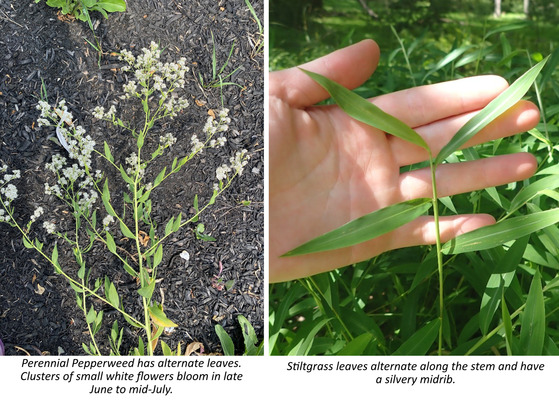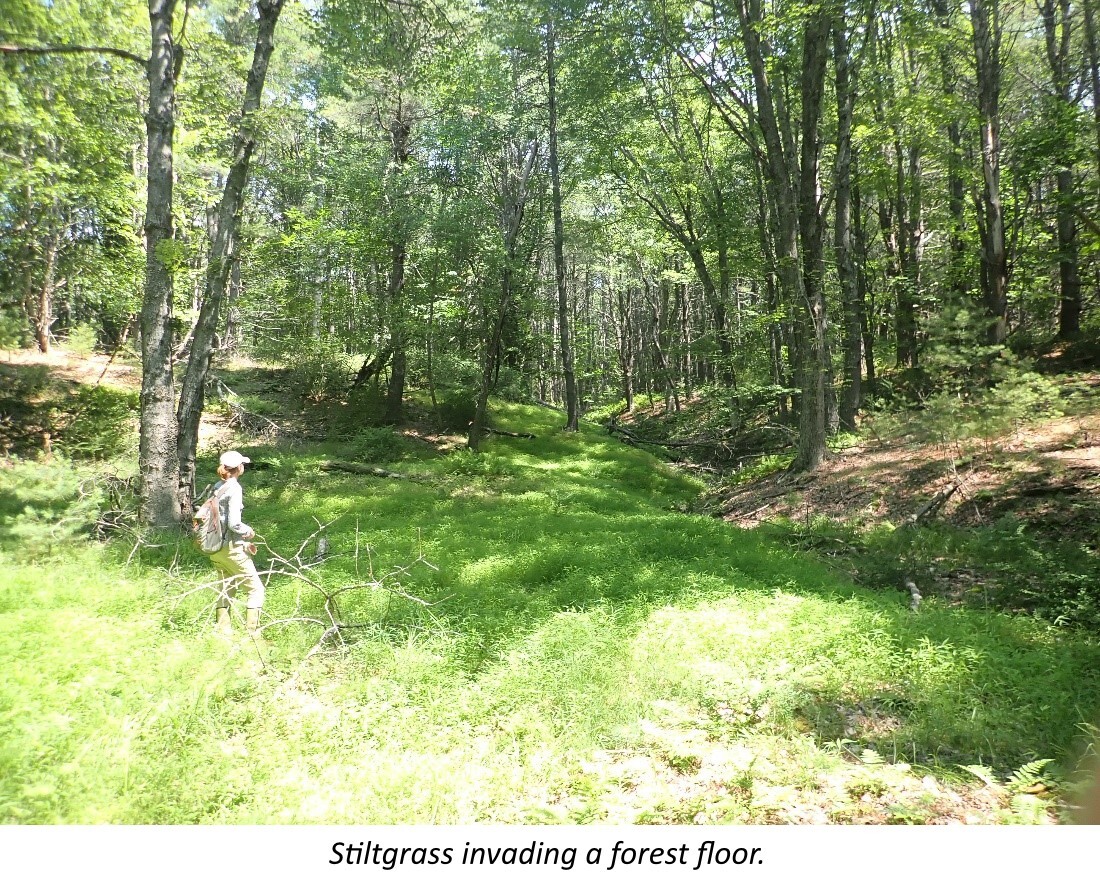NISAW Day 4: Invasive Plants
Lookout for Pepperweed and Stiltgrass!

Biologists from the Maine Department of Agriculture, Conservation and Forestry (DACF) are asking for the public?s help finding locations of two severely invasive plants: Japanese Stiltgrass (Microstegium vinimeum) and Perennial Pepperweed (Lepidium latifolium).
Populations of these species are only known from a handful of sites in Maine, which makes them excellent candidates for Early Detection/Rapid Response efforts. The public can help eradicate these species from Maine by reporting any suspected locations.
Nursery owners and landscapers should take particular note of these two plants because their seeds (or root fragments in the case of Perennial Pepperweed) can hitchhike in potted plants, soil, un-composted mulches, etc. Stiltgrass is known to spread accidentally via contaminated nursery plants. Perennial Pepperweed can also be spread in salt marsh hay that was harvested from infested marshes.
Stiltgrass is an annual grass that takes over the forest floor. Stiltgrass thatch builds up and makes it difficult for native trees, shrubs, and wildflowers to regenerate, establish, and grow. The thatch also raises fire risk. Infestations grow rapidly as each plant can produce up to a thousand seeds that can be spread by moving water, deer, contaminated soil, dirty boots, or dirty equipment. Two locations of Stiltgrass were detected for the first time in Maine in 2020.

Perennial Pepperweed (aka Perennial Pepperwort) is an herbaceous plant that can take over sensitive habitat in salt marshes and sand beaches. These are rare habitats in Maine, and home to rare wildlife. When Perennial Pepperweed takes over, it can make the habitat unsuitable. Perennial Pepperweed can also grow in roadsides, riverbanks, and freshwater marshes. There are dense infestations of Perennial Pepperweed in Massachusetts, but only a handful of sites are known in Maine and New Hampshire. Newly detected Stiltgrass or Perennial Pepperweed should be removed to keep these invasive plants from damaging Maine?s treasured forests and wetlands.? DACF will offer support and guidance to affected landowners.
If you think you have found Stiltgrass or Perennial Pepperweed on your property or on public land, please review these species on the MNAP Web Gallery and GoBotany website. Then please send an email with photos and location to [email protected], or map the location with photos in the online mapping tool iMapInvasives.
|
